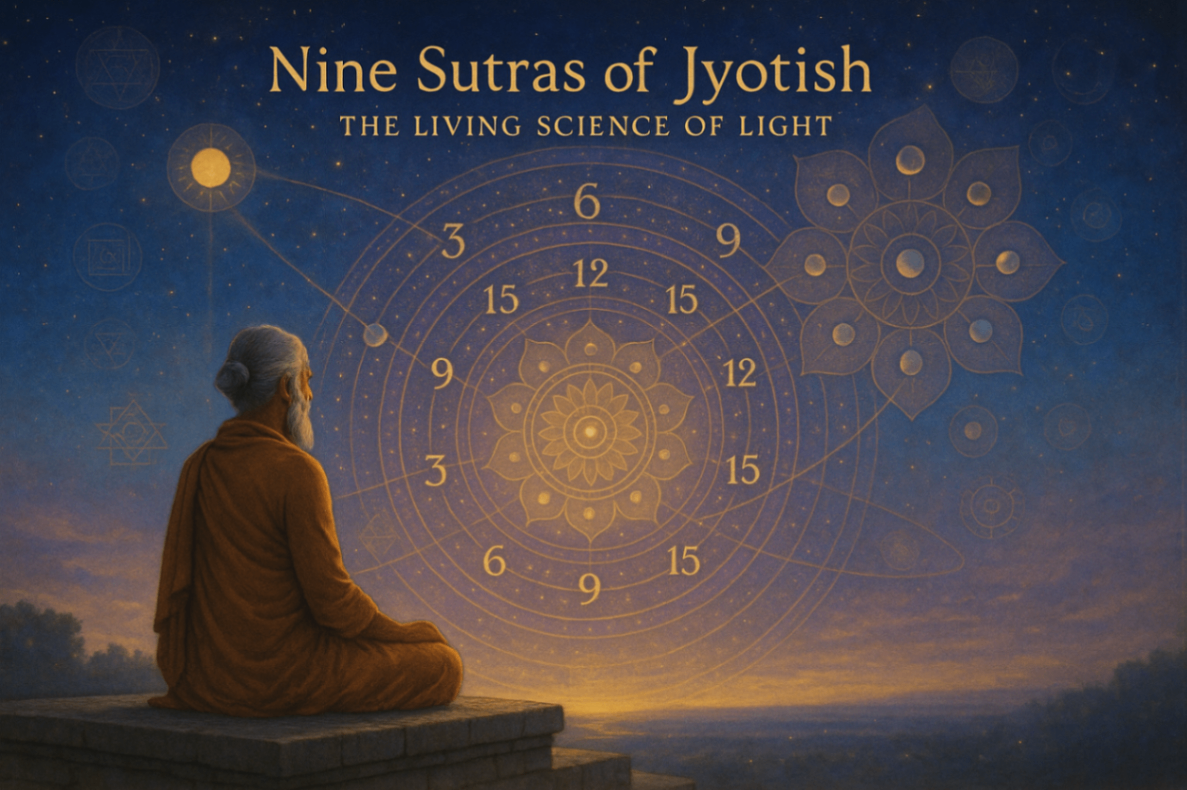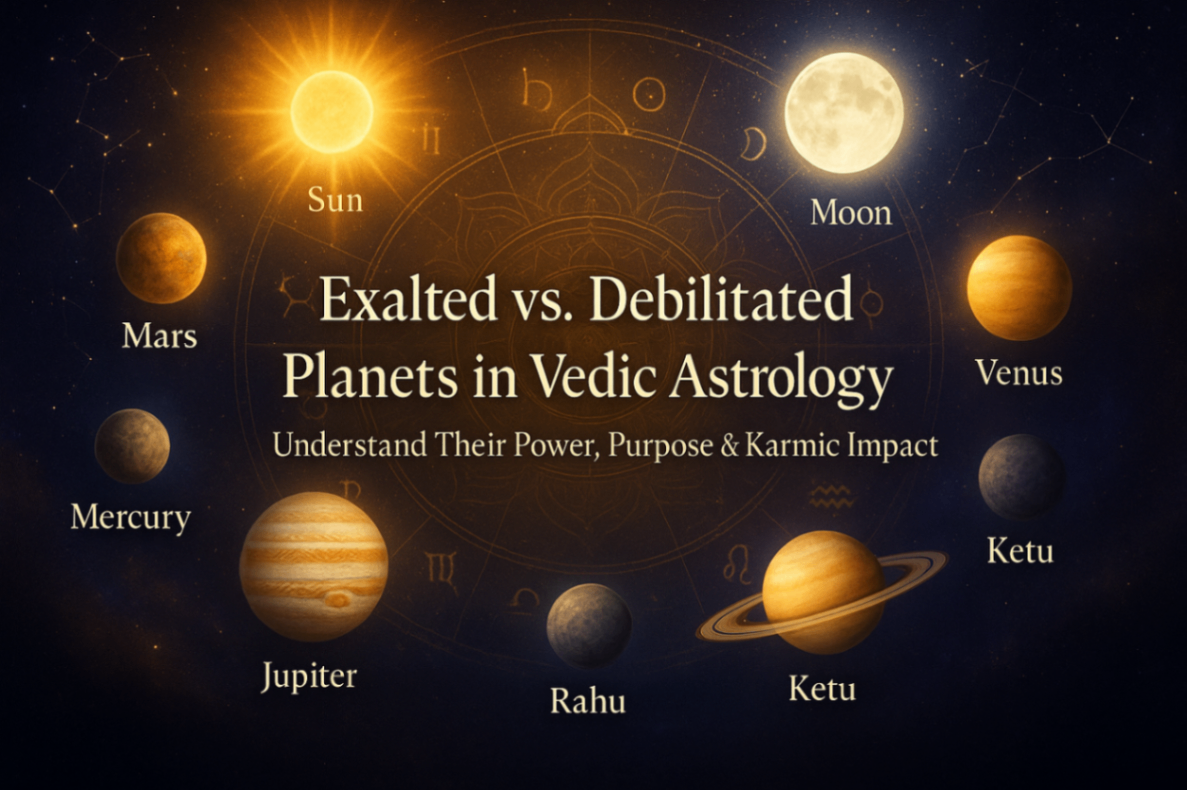The D9 chart, also known as the Navamsa chart, plays a crucial role in Vedic astrology. It provides deep insights into the real strength of planets, matrimonial life, and matters concerning luck and fortune. The D9 chart is not powerful when studied alone; it must be analyzed in conjunction with the main ascendant chart.
Introduction to Ashtamsha
Ashtamsha refers to the specific placement of planets in the D9 chart, where a planet is placed eight signs from its original position in the ascendant chart. This placement is significant for understanding how a planet behaves, especially when it comes to unpredictability and uncertainty in its effects.
Significance of Movable and Mutable Signs in Ashtamsha
Only the movable signs (Aries, Cancer, Libra, Capricorn) and the mutable signs (Gemini, Virgo, Sagittarius, Pisces) are eligible for Ashtamsha placement. Fixed signs do not have this alignment. Each of these signs has specific degrees where Ashtamsha can occur, significantly influencing the behavior of the planets placed in these degrees.
Ashtamsha in Aries
For Aries, the Ashtamsha region is from 23°20' to 26°40'. A planet placed in these degrees in the Navamsa chart will be in Scorpio. The associated Nakshatra is Bharani, ruled by Yama, the Lord of Time and Death. This placement brings unpredictability, childlike behavior, and tantrums, along with a strong sexual allure and charm.
For example, Mars, Jupiter, and the Sun can manifest transformative results despite the unpredictability, while planets like Rahu, Mercury, and Saturn may cause struggles, negative thinking, and toxicity.
Ashtamsha in Gemini
For Gemini, the Ashtamsha region is from 10° to 13°20'. A planet placed here in the D9 chart will be in Capricorn, associated with the Ardra Nakshatra. Ardra is ruled by Rahu and is known for its childlike tantrums and unpredictability. This placement can be beneficial for planets like Mercury, Venus, Saturn, and Rahu, as they can manifest good results through cunning and opportunism.
However, this placement may also lead to unpredictable societal judgments and situations, emphasizing the need for adaptability and resilience.
Ashtamsha in Cancer
For Cancer, the Ashtamsha region is from 23°20' to 26°40'. A planet placed here in the D9 chart will be in Aquarius, associated with the Ashlesha Nakshatra. Despite its negative reputation, Ashlesha possesses scientific and humanitarian qualities that can help individuals navigate through life's challenges.
Emotional conflicts may arise due to the disparity between personal desires and external circumstances, especially in matters of marriage and relationships.
Ashtamsha in Virgo
For Virgo, the Ashtamsha region is from 10° to 13°20'. A planet placed here in the D9 chart will be in Aries, associated with the Hasta Nakshatra. This placement indicates a highly skilled and competent individual, but one who may struggle to build or stabilize anything substantial.
Saturn and Mercury, in particular, may face challenges in this placement, leading to frustration despite their inherent capabilities and hard work.
Ashtamsha in Libra
For Libra, the Ashtamsha region is from 23°20' to 26°40'. A planet placed here in the D9 chart will be in Taurus, associated with the Vishakha Nakshatra. Vishakha brings single-minded determination and control, but the Ashtamsha placement can lead to feelings of being caged or restricted.
Venus may feel confined, losing its ability to socialize and think creatively. The same applies to Jupiter, Mercury, and Mars, which may face limitations in their respective domains.
Ashtamsha in Sagittarius
For Sagittarius, the Ashtamsha region is from 10° to 13°20'. A planet placed here in the D9 chart will be in Cancer, associated with the Mula Nakshatra. Mula is known for its research and exploration capabilities, but the Ashtamsha placement can lead to feelings of being lost or misguided.
This placement affects fiery planets like Mars and the Sun, making them vulnerable and easily intimidated. It also introduces unpredictability in luck and aspirations, often leading to a dual personality in public and private life.
Ashtamsha in Capricorn
For Capricorn, the Ashtamsha region is from 23°20' to 26°40'. A planet placed here in the D9 chart will be in Leo, associated with the Dhanishta Nakshatra. This placement can be beneficial for achieving power and identity but may involve unpredictable and challenging circumstances.
While this alignment can grant authority and recognition, it may also lead to self-centered behavior, affecting one's reputation and honor in society.
Ashtamsha in Pisces
For Pisces, the Ashtamsha region is from 10° to 13°20'. A planet placed here in the D9 chart will be in Libra, associated with the Uttara Bhadrapada Nakshatra. This placement involves a conflict between spiritual aspirations and practical, commercial realities.
Individuals with this alignment may initially sacrifice personal gains for societal acceptance, only to face regret later. This placement often brings unpredictability in relationships and financial matters, necessitating a realistic and practical approach.
Conclusion
Ashtamsha placements in the D9 chart introduce a significant degree of unpredictability and erratic behavior in the planets involved. Understanding these placements can help individuals navigate through life's challenges, especially in areas related to marriage, luck, and personal aspirations.
For more in-depth insights and updates on Vedic astrology, stay connected and explore further.
```


































